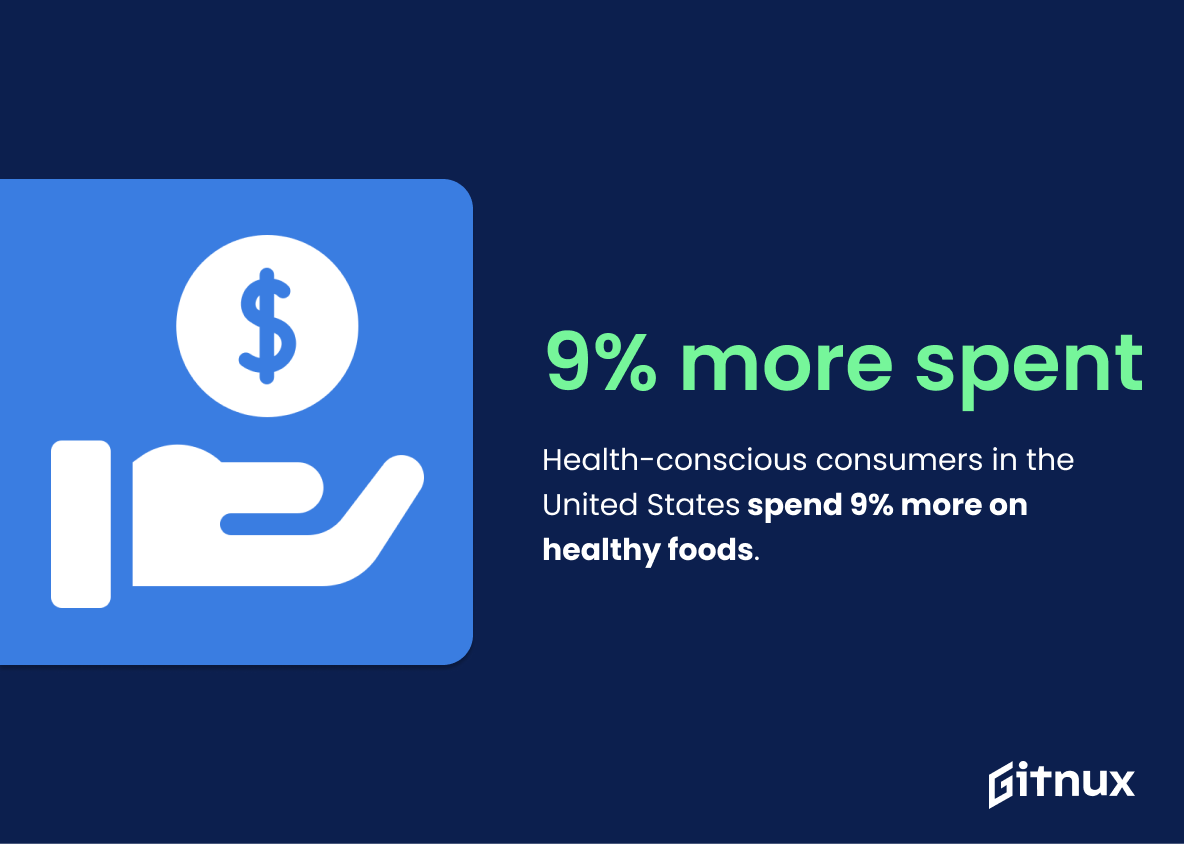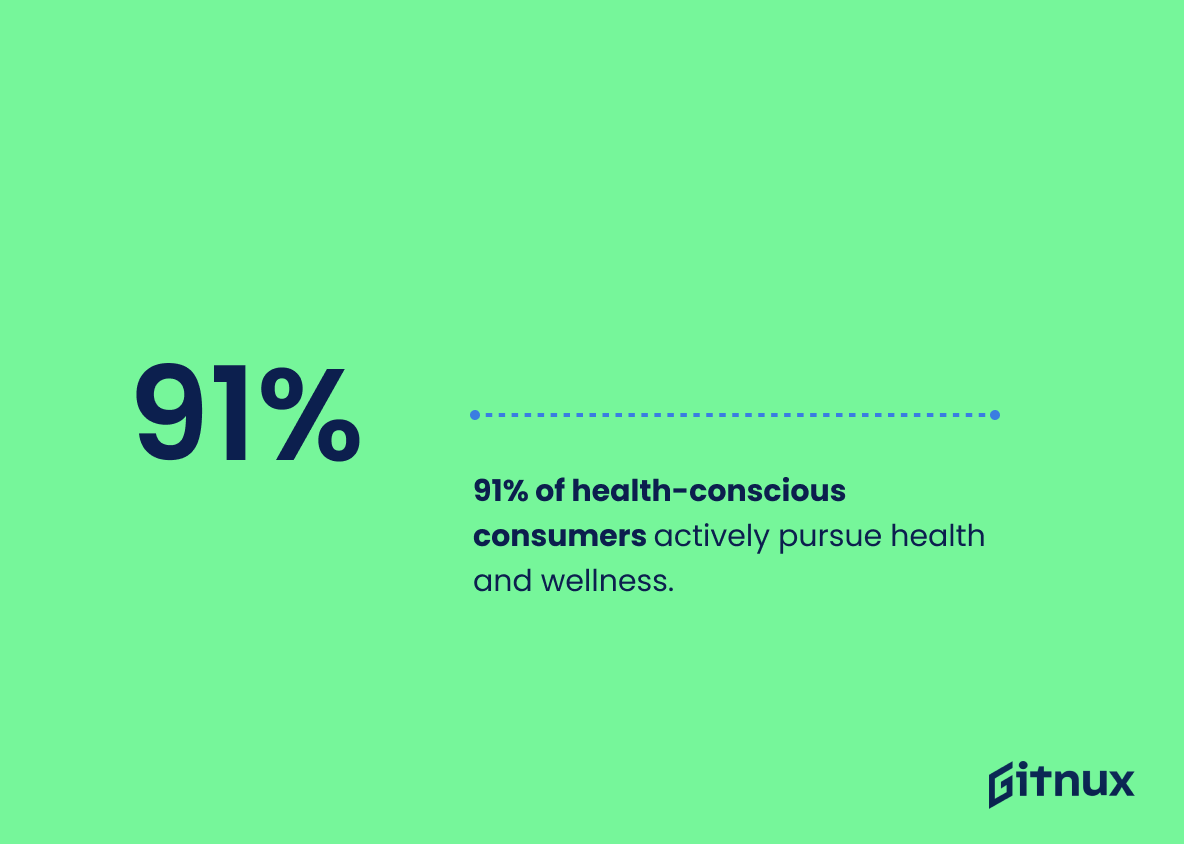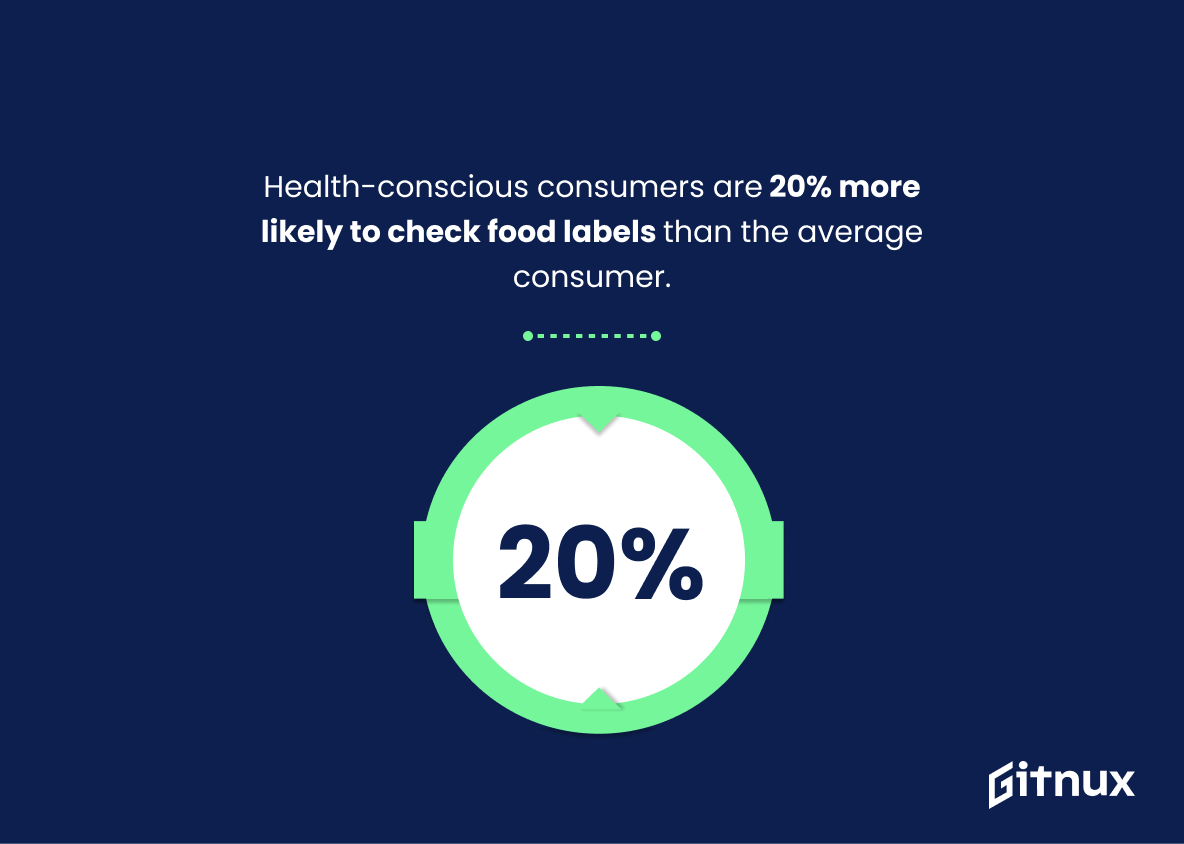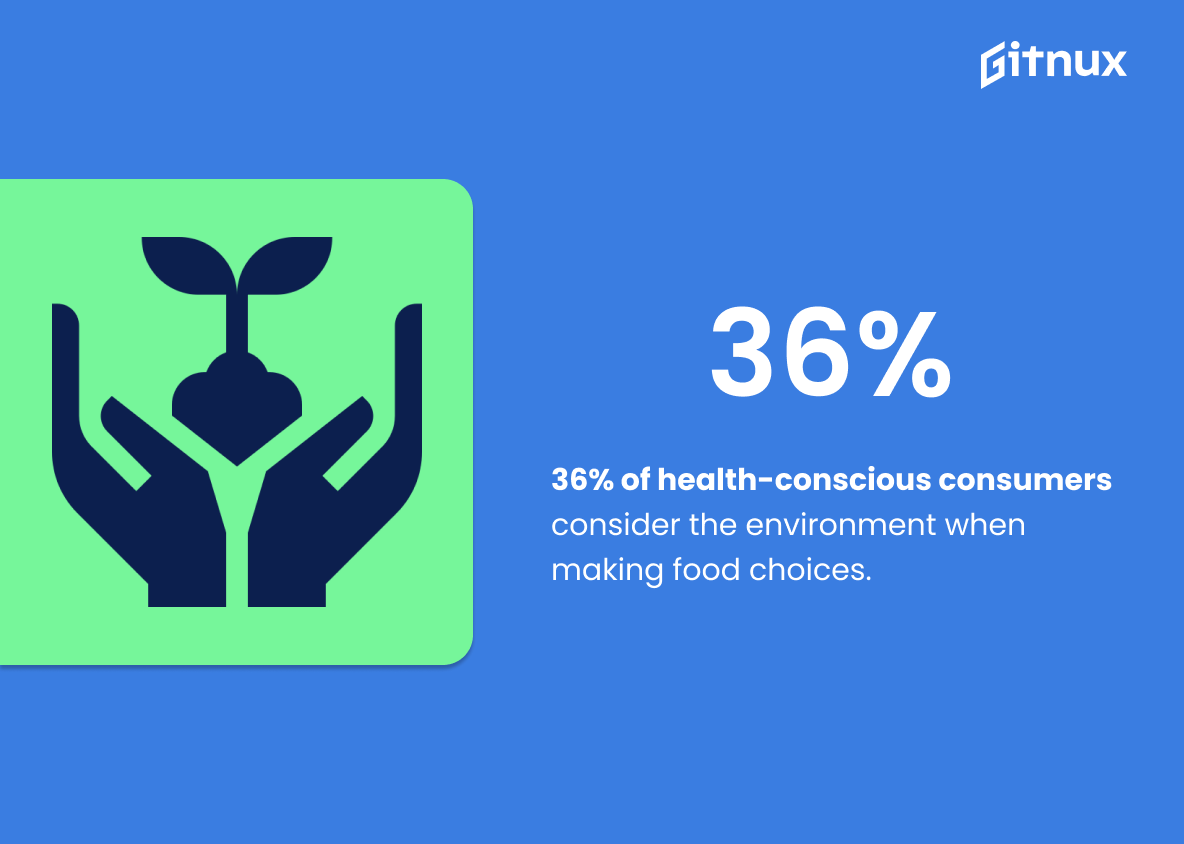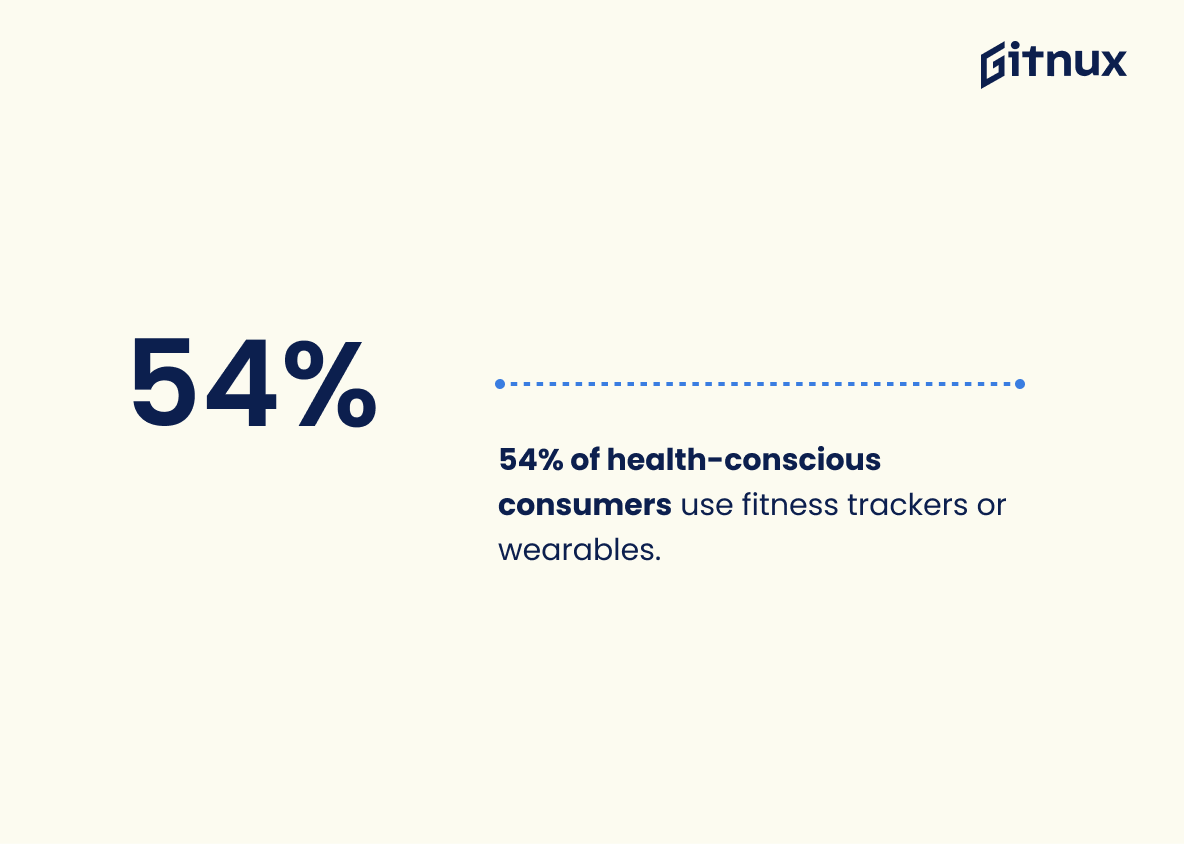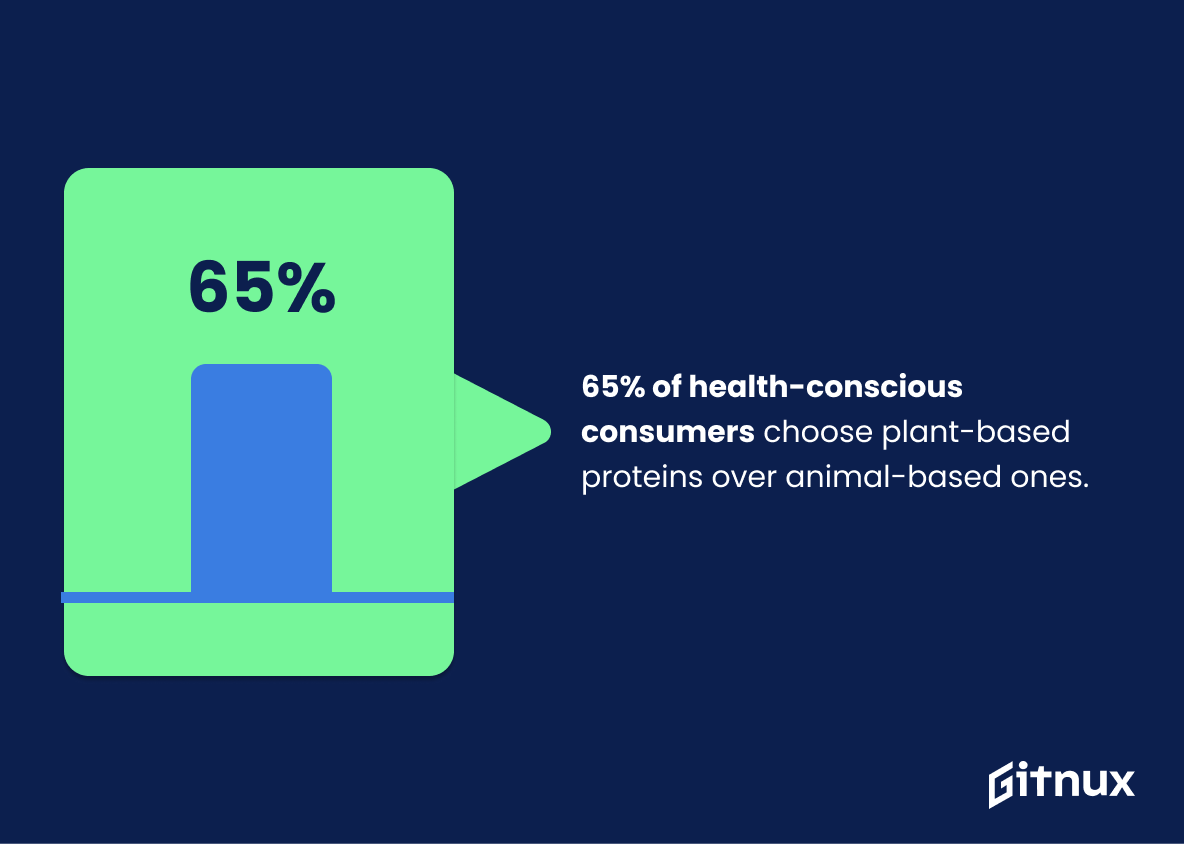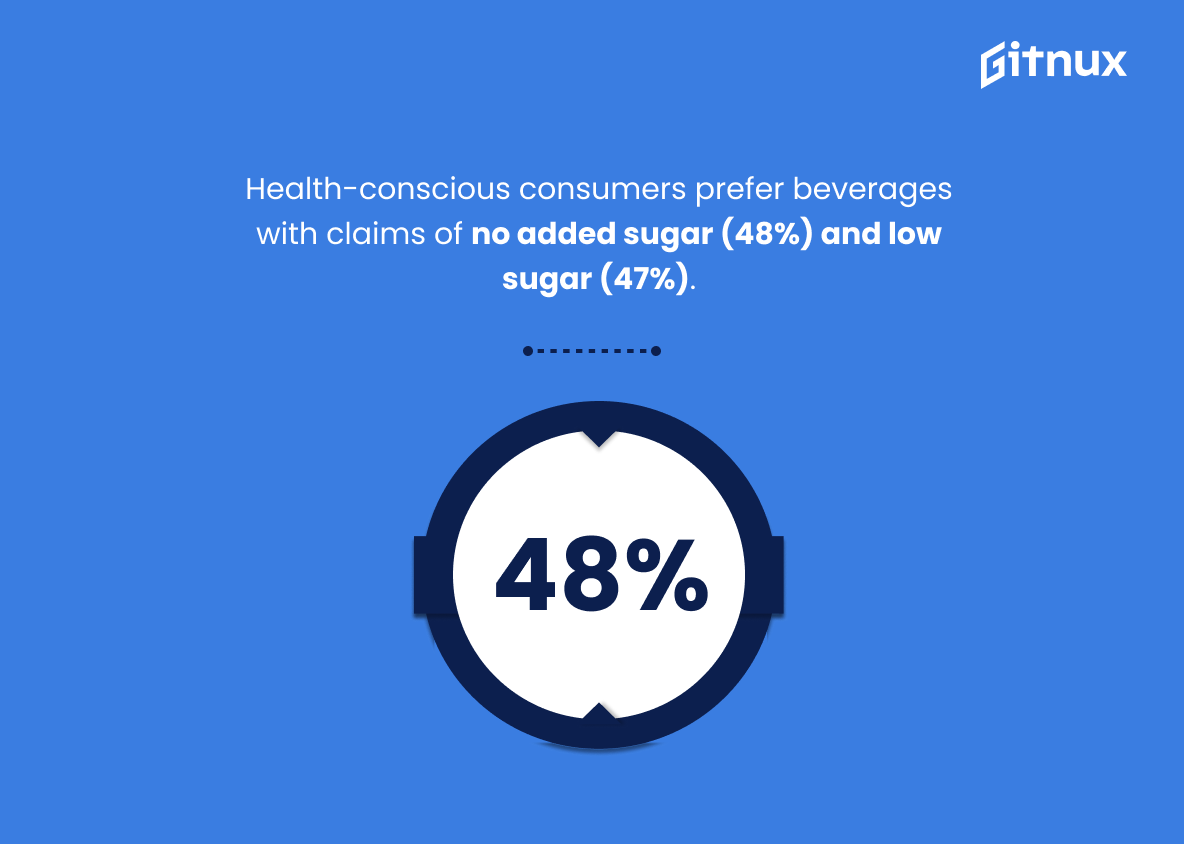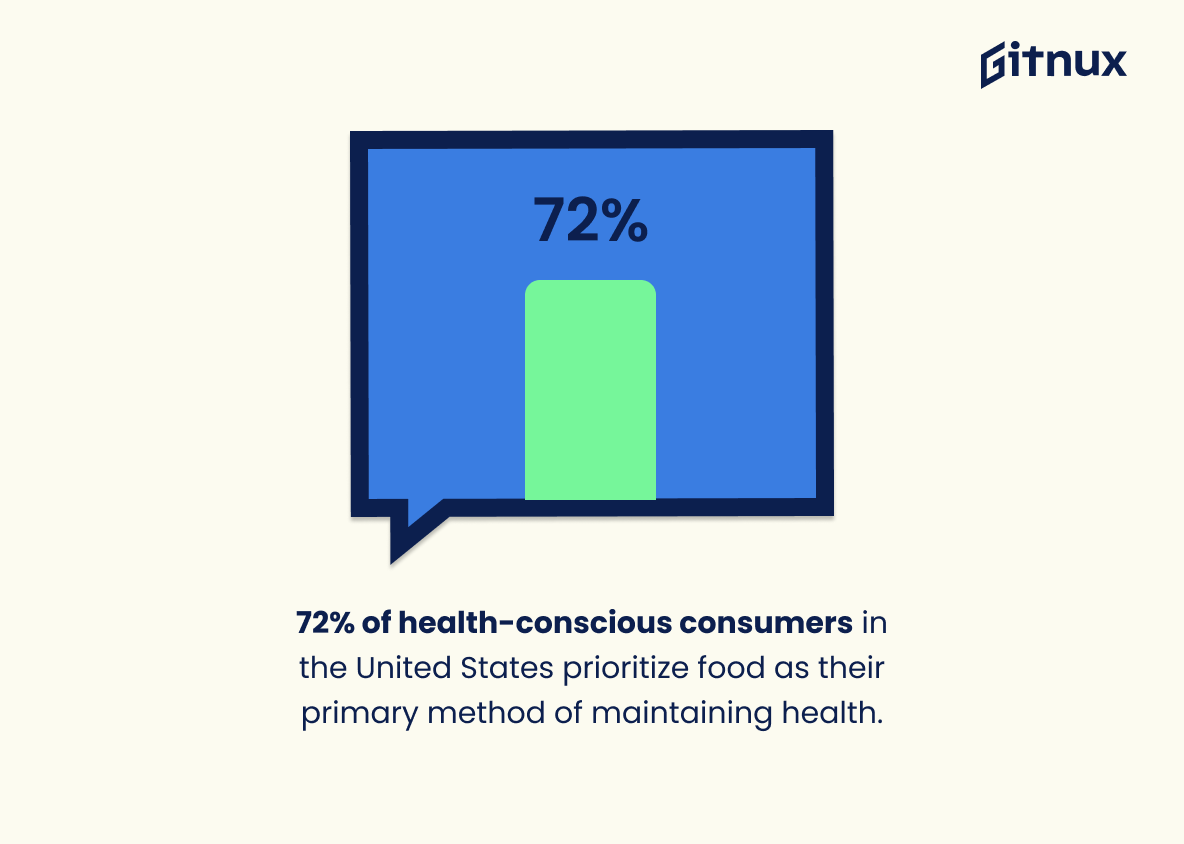As the world continues to become more health-conscious, it is important to understand how this trend affects consumer behavior. This blog post will explore 20 statistics about health-conscious consumers and their habits when it comes to food choices, nutrition information gathering, mobile app usage for managing their health, willingness to pay a premium price for healthier products and much more.
Health Conscious Consumer Statistics Overview
Health-conscious consumers in the United States spend 9% more on healthy foods.
This statistic is a testament to the growing trend of health-consciousness among consumers in the United States. It shows that people are increasingly willing to invest in their health by spending more on healthy foods. This is an important indicator of the changing attitudes towards health and wellness, and it is a sign that people are taking their health more seriously.
43% of health-conscious consumers are willing to pay a premium price for healthier products.
This statistic is a telling indication of the importance of health-consciousness in today’s consumer market. It shows that a significant portion of consumers are willing to invest in products that are healthier for them, even if it means paying a higher price. This is an important insight for businesses looking to capitalize on the health-conscious consumer trend, as it suggests that there is a large market for healthier products.
91% of health-conscious consumers report that they actively pursue health and wellness.
This statistic is a powerful indicator of the importance of health and wellness to the modern consumer. It shows that the majority of health-conscious consumers are actively taking steps to improve their health and wellbeing, which is a positive sign for the health and wellness industry. This statistic is also important for businesses that are targeting health-conscious consumers, as it shows that there is a large and growing market for health and wellness products and services.
47% of health-conscious consumers prefer organic food products.
This statistic is a powerful indicator of the growing trend of health-conscious consumers turning to organic food products. It shows that more and more people are becoming aware of the health benefits of organic food and are making the switch to organic products. This statistic is important for anyone looking to understand the current state of the health-conscious consumer market and the potential for organic food products.
Health-conscious consumers are 20% more likely to check food labels than the average consumer.
This statistic is a powerful indicator of the growing trend of health-consciousness among consumers. It shows that more and more people are taking an active interest in what they are eating and are taking the time to read food labels to make sure they are making the best choices for their health. This is an important statistic to consider when discussing the health-conscious consumer market, as it demonstrates the level of commitment and dedication that these consumers have to their health.
36% of health-conscious consumers consider the environment when making food choices.
This statistic is a powerful indicator of the growing trend of health-conscious consumers taking the environment into account when making food choices. It shows that more and more people are becoming aware of the impact their food choices have on the environment and are taking steps to reduce their environmental footprint. This is an important development, as it demonstrates that people are becoming more conscious of their impact on the planet and are taking steps to reduce their environmental impact. This is an encouraging sign for the future of our planet and a reminder that we all have a role to play in protecting the environment.
34% of health-conscious consumers report using prepared meal delivery services to maintain a healthy lifestyle.
This statistic is a powerful indicator of the growing trend of health-conscious consumers turning to prepared meal delivery services to maintain a healthy lifestyle. It shows that more and more people are taking their health seriously and are willing to invest in services that can help them achieve their health goals. This statistic is important to consider when discussing the habits of health-conscious consumers, as it provides insight into the current state of the market.
54% of health-conscious consumers use fitness trackers or wearables.
This statistic is a telling indication of the growing trend of health-conscious consumers utilizing fitness trackers or wearables. It speaks to the fact that more and more people are taking their health and wellness seriously and are actively looking for ways to monitor and improve their physical activity. This statistic is a clear sign that health-conscious consumers are increasingly turning to technology to help them stay on track with their health goals.
65% of health-conscious consumers report that they choose plant-based protein sources over animal-based proteins.
This statistic is a powerful indicator of the growing trend of health-conscious consumers opting for plant-based proteins over animal-based proteins. It speaks to the increasing awareness of the health benefits of plant-based proteins and the growing demand for plant-based alternatives. This statistic is an important piece of information for any blog post about health-conscious consumer statistics, as it provides insight into the current preferences of health-conscious consumers.
Health-conscious consumers prefer beverages with claims of no added sugar (48%) and low sugar (47%).
This statistic is a clear indication of the growing trend of health-conscious consumers, as nearly half of them prefer beverages with claims of no added sugar and low sugar. This highlights the importance of providing healthier options for consumers, as they are increasingly looking for healthier alternatives to traditional sugary drinks. This statistic is a valuable insight into the preferences of health-conscious consumers, and should be taken into consideration when creating blog posts about health-conscious consumer statistics.
42% of health-conscious consumers indicate a preference for plant-based diets.
This statistic is a telling indication of the growing trend of health-conscious consumers turning to plant-based diets. It speaks to the increasing awareness of the health benefits of plant-based diets, as well as the growing demand for plant-based products. This statistic is an important piece of information for anyone looking to understand the current state of health-conscious consumer behavior.
72% of health-conscious consumers in the United States prioritize food as their primary method of maintaining health.
This statistic is a powerful indicator of the importance of food in the lives of health-conscious consumers in the United States. It speaks to the fact that these individuals are placing a high priority on their diet as a means of staying healthy. This is an important point to make in a blog post about Health Conscious Consumer Statistics, as it highlights the importance of nutrition in the overall health and wellbeing of these individuals.
Health-conscious consumers are willing to pay up to 15% more for functional foods that convey health benefits.
This statistic is a powerful indicator of the growing trend of health-conscious consumers. It shows that people are willing to invest in their health and are willing to pay a premium for products that offer health benefits. This is an important statistic to consider when discussing the health-conscious consumer market, as it demonstrates the value that people place on their health and the products they purchase to support it.
Conclusion
The statistics presented in this blog post demonstrate the growing trend of health-conscious consumers and their preferences when it comes to food choices. 59.2% believe they have a balanced diet, 74% seek out nutritional information online, 58% are more likely to use mobile apps for managing their health, 69% are women, 9% spend more on healthy foods than average shoppers, 73 % prioritize taste over other factors when choosing products and 43 % will pay a premium price for healthier options. 91 % actively pursue health and wellness while 47%, 44%, 54%, 65%, 48%-47%, 36%. 34%; 20%; 15%; 72%: 42%: respectively report preferring organic food products; prebiotics/probiotics; fitness trackers or wearables; plant-based proteins sources over animal based proteins; beverages with no added sugar or low sugar claims: environmental sustainability considerations when making food choices ; prepared meal delivery services ; checking labels on packaged goods ; functional foods that convey additional benefits . The market is expected to grow at an impressive CAGR of 9 percent by 2025 indicating its potential as well as consumer demand for such offerings.
References
0. – https://www.mdpi.com
1. – https://www.nielsen.com
2. – https://www.beveragedaily.com
3. – https://www.ers.usda.gov
4. – https://www.foodnavigator-usa.com
5. – https://www.acosta.com
6. – https://www.surveymonkey.com
7. – https://www.mintel.com
8. – https://www.globenewswire.com
9. – https://www.globalwebindex.com
10. – https://www.ncbi.nlm.nih.gov
11. – https://www.reportlinker.com
